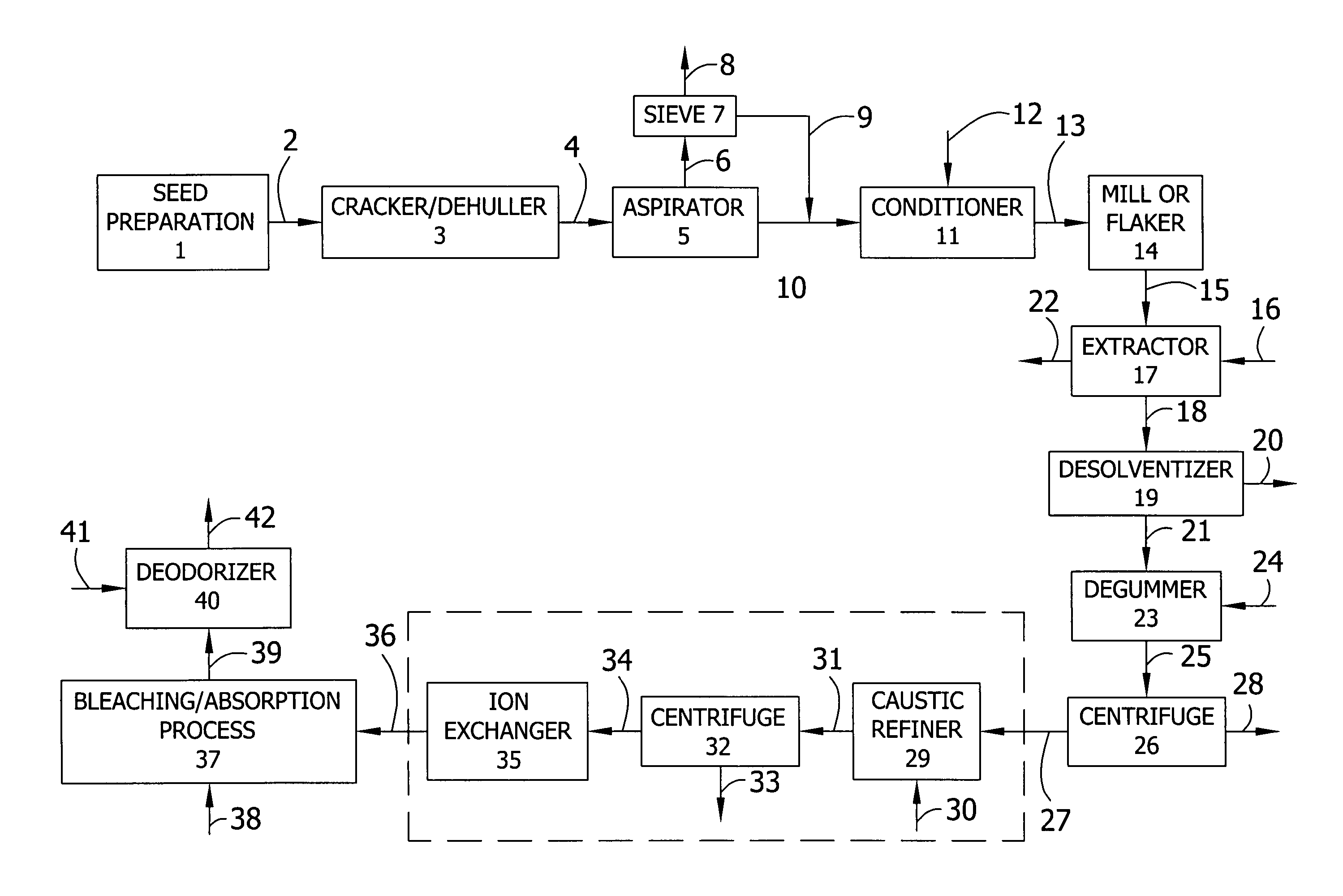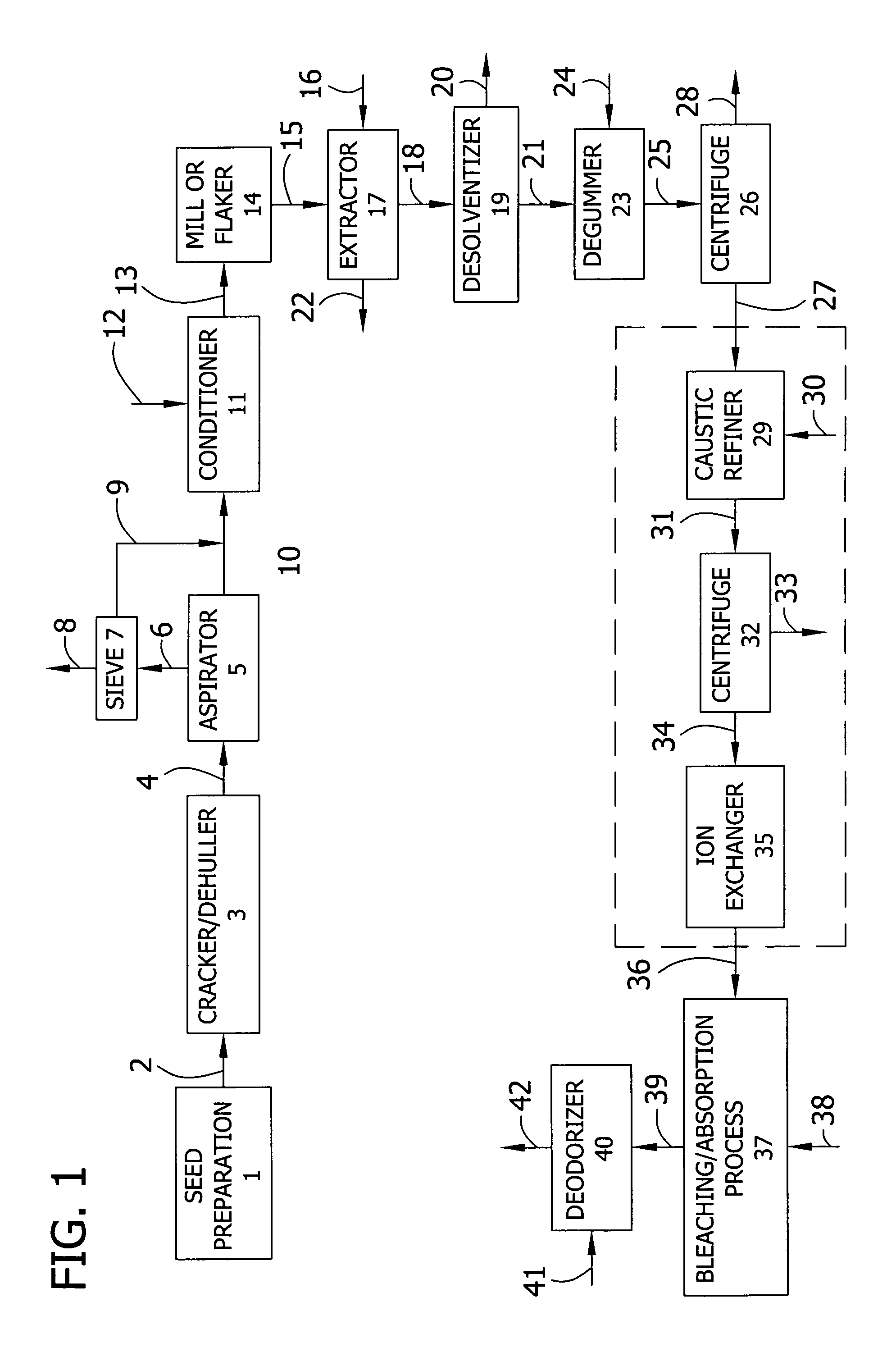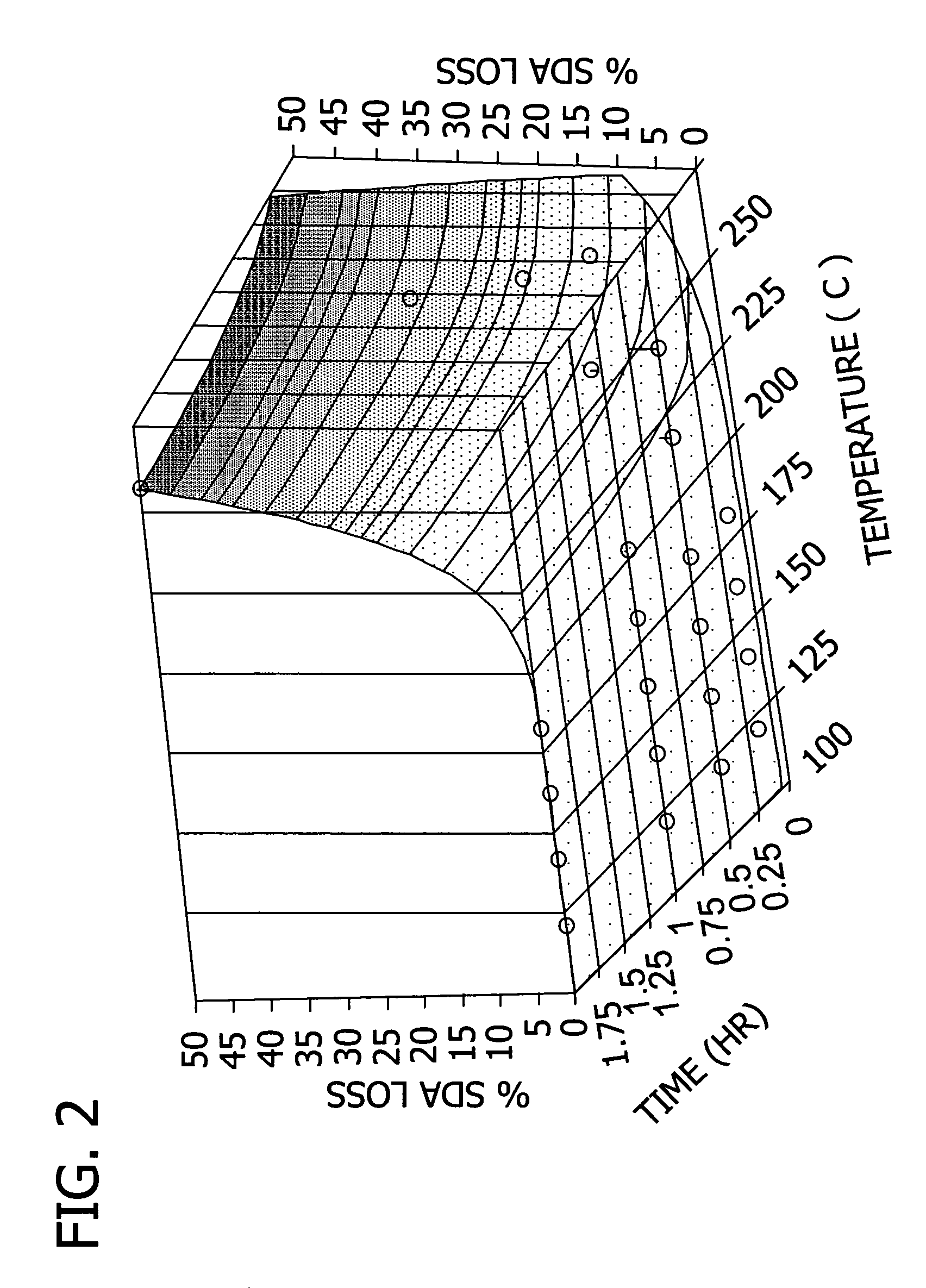Processes for preparation of oil compositions
a technology of oil composition and process, which is applied in the direction of fatty-oil/fat refining, edible seed preservation, bakery products, etc., can solve the problems of oil oxidation, deformation, and undesirable isomerization of cis-fatty acids to trans-fatty acids, so as to minimize the isomerization of cis-fatty acids, minimize oxygen concentration, and minimize the effect of oxidation
- Summary
- Abstract
- Description
- Claims
- Application Information
AI Technical Summary
Benefits of technology
Problems solved by technology
Method used
Image
Examples
examples 1-14
General Laboratory Procedures and Equipment
[0121]All operations were performed in an inert atmosphere (under an active purge with nitrogen) utilizing a glove bag, a glove box or airless transfer schlenk line techniques. Whole seeds were placed in mega-grinder capsules under inert conditions and sealed with an airtight cap. The sealed capsules were then removed from the inert atmosphere and milled / ground on the mega-grinder platform. The capsules were then returned to an inert atmosphere where they could be opened and further processing was initiated. All solvents and solutions are previously degassed with a subsurface sparging of nitrogen. All vessels that are brought into an inert environment chambers are degassed so adequate purging the container can take place.
[0122]Processing procedure for soybeans containing low alpha-linolenic acid:
[0123]Abbreviations: round bottom flask (RBF); small reactor (SR); stainless steel (SS); centrifuge tube (CT).
[0124]Milling Procedure: The glove ba...
examples 15-24
Laboratory Processing of High SDA Canola Seeds
[0135]The process of Examples 1-14 was used with the following changes. About 18 g of seeds were weighed out and added to Teflon capsules for the mega-grinder. The capsules were filled enough so the total weight of seed was approximately 100 grams. The seeds were then milled at 1200 RPM for 60 seconds.
[0136]Degumming: Using Schlenk line techniques, the crude oil was transferred into a small reactor. The oil was then heated to 55±5° C. c A 5% citric acid was added at 2.0 wt % and stirred for 15 minutes at 350 rpm. Next, 2% HPLC grade water was added and stirred for 30 minutes at 350 rpm. The mixture was then removed and centrifuged.
[0137]Phosphoric acid Treatment: The degummed oil was transferred into a small reactor and heated to 55±5° C. Next, 5% of an 85% phosphoric acid solution was added by syringe and mixed for 15 minutes at 350 rpm. The oil was then transferred and centrifuged.
[0138]Neutralization: The phosphoric acid treated oil w...
examples 25-33
Laboratory Processing of High SDA Soy Seeds
[0143]The processing parameters were the same as for Examples 15-24 with the following changes. The cracker and aspirator were placed in glove box under a nitrogen atmosphere. The seeds were then passed through the seed cracker twice. The cracked seeds and hulls were then passed through a series of sieves to separate the fines. Next the seeds and hulled were aspirated, separating the seed from the hulls. Approximately 20 g of dehulled seeds were then added to Teflon capsules for the mega-grinder. Enough capsules were filled so the total weight of seed was approximately 350 grams.
[0144]Extraction Procedure: The capsules were placed in the glove bag. It was purged three times with nitrogen and the capsules were then opened. The glass thimble for the soxhlet extractor was filled with the ground seed.
[0145]
Example252627VarietyHigh SDA Nitrogen Treated SeedJGA38X167KRA38X293CrudeDegummedRefinedWater washBleachedRBDFFA, %PV, Meq / kgPalmitic C16:01...
PUM
| Property | Measurement | Unit |
|---|---|---|
| temperature | aaaaa | aaaaa |
| pressure | aaaaa | aaaaa |
| temperature | aaaaa | aaaaa |
Abstract
Description
Claims
Application Information
 Login to View More
Login to View More - R&D
- Intellectual Property
- Life Sciences
- Materials
- Tech Scout
- Unparalleled Data Quality
- Higher Quality Content
- 60% Fewer Hallucinations
Browse by: Latest US Patents, China's latest patents, Technical Efficacy Thesaurus, Application Domain, Technology Topic, Popular Technical Reports.
© 2025 PatSnap. All rights reserved.Legal|Privacy policy|Modern Slavery Act Transparency Statement|Sitemap|About US| Contact US: help@patsnap.com



